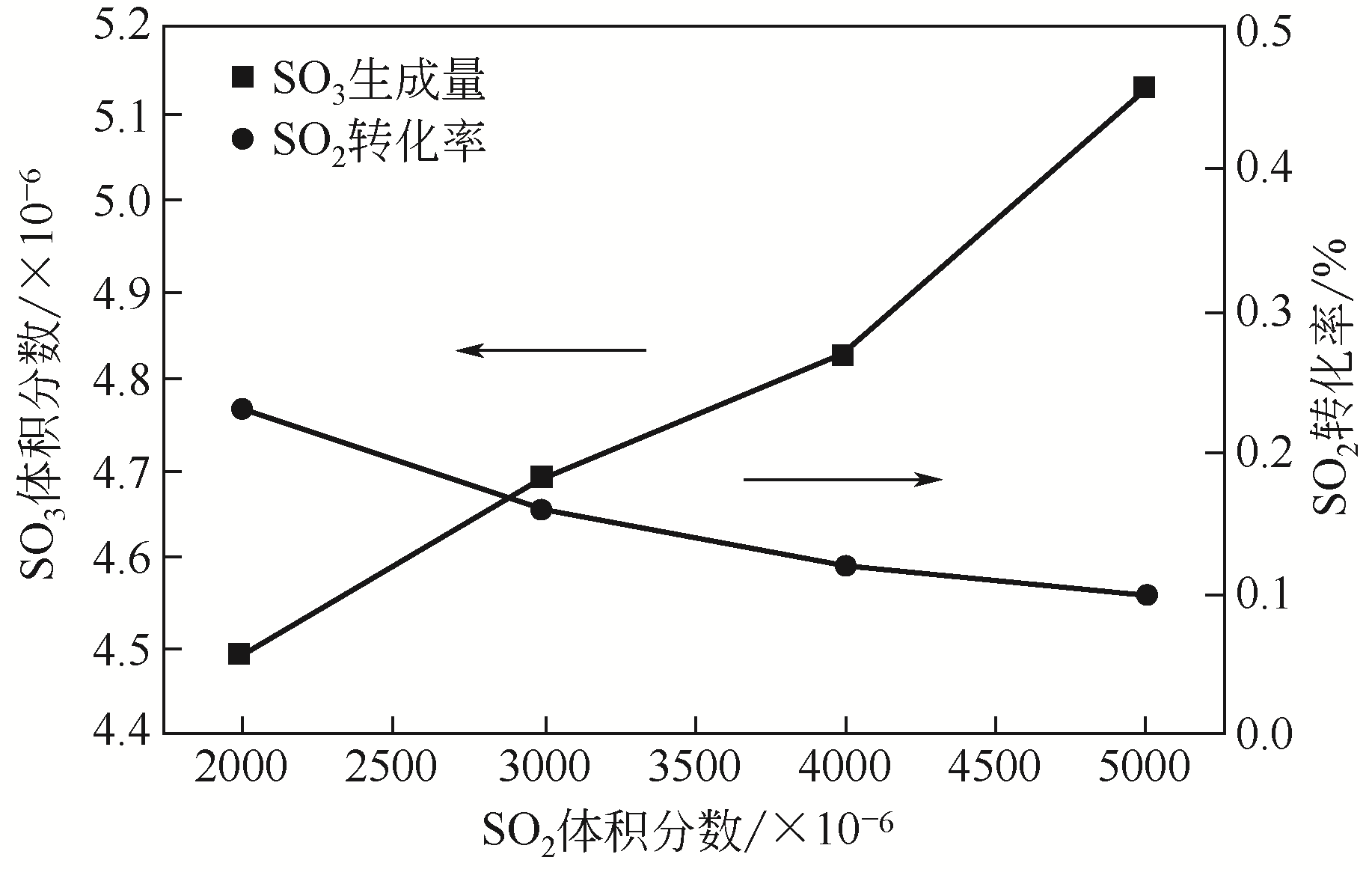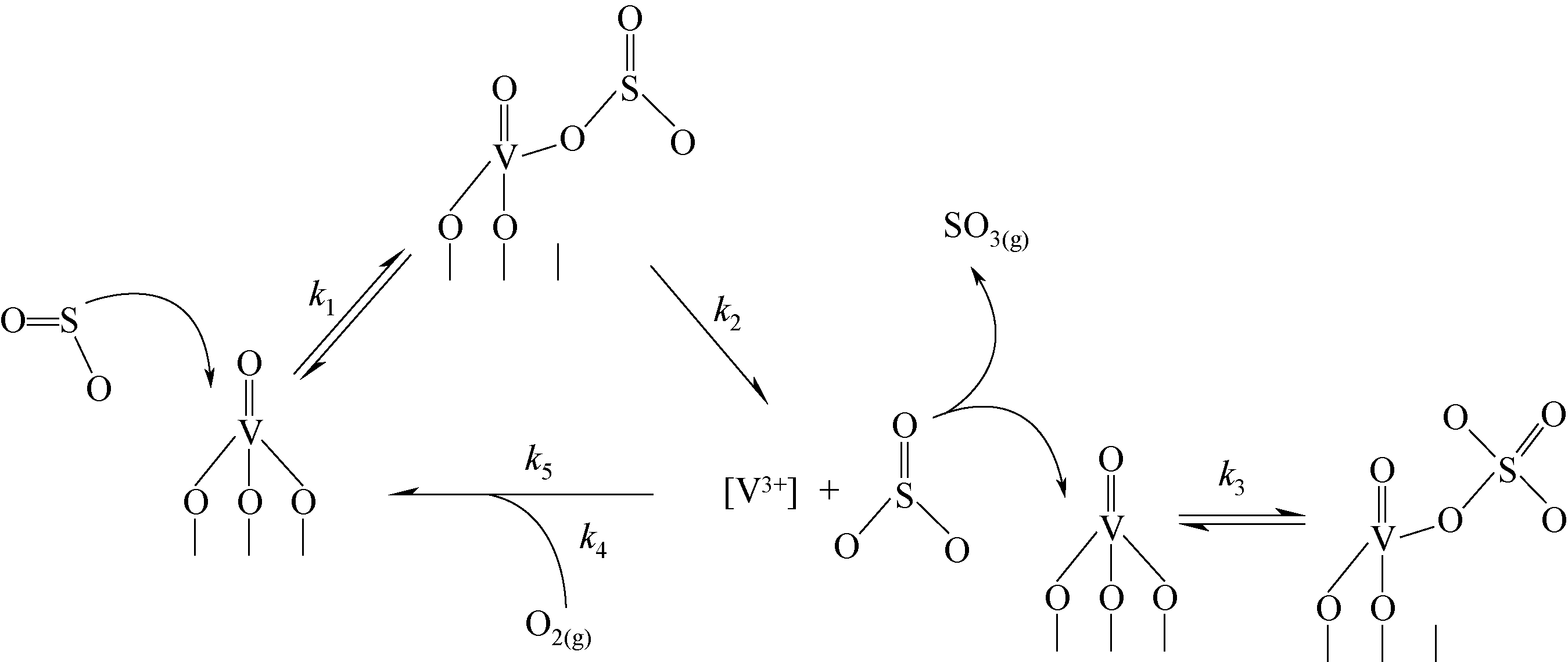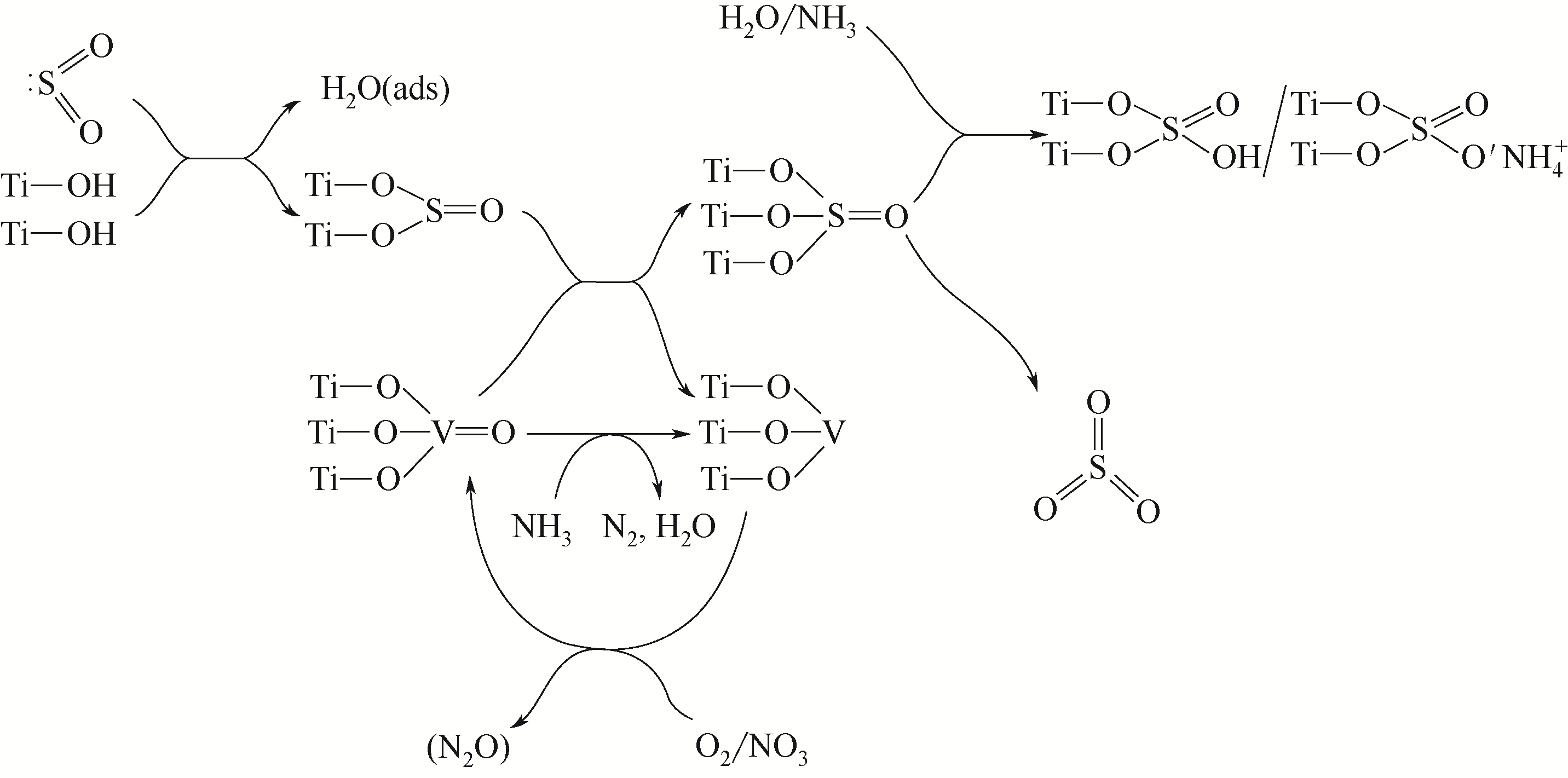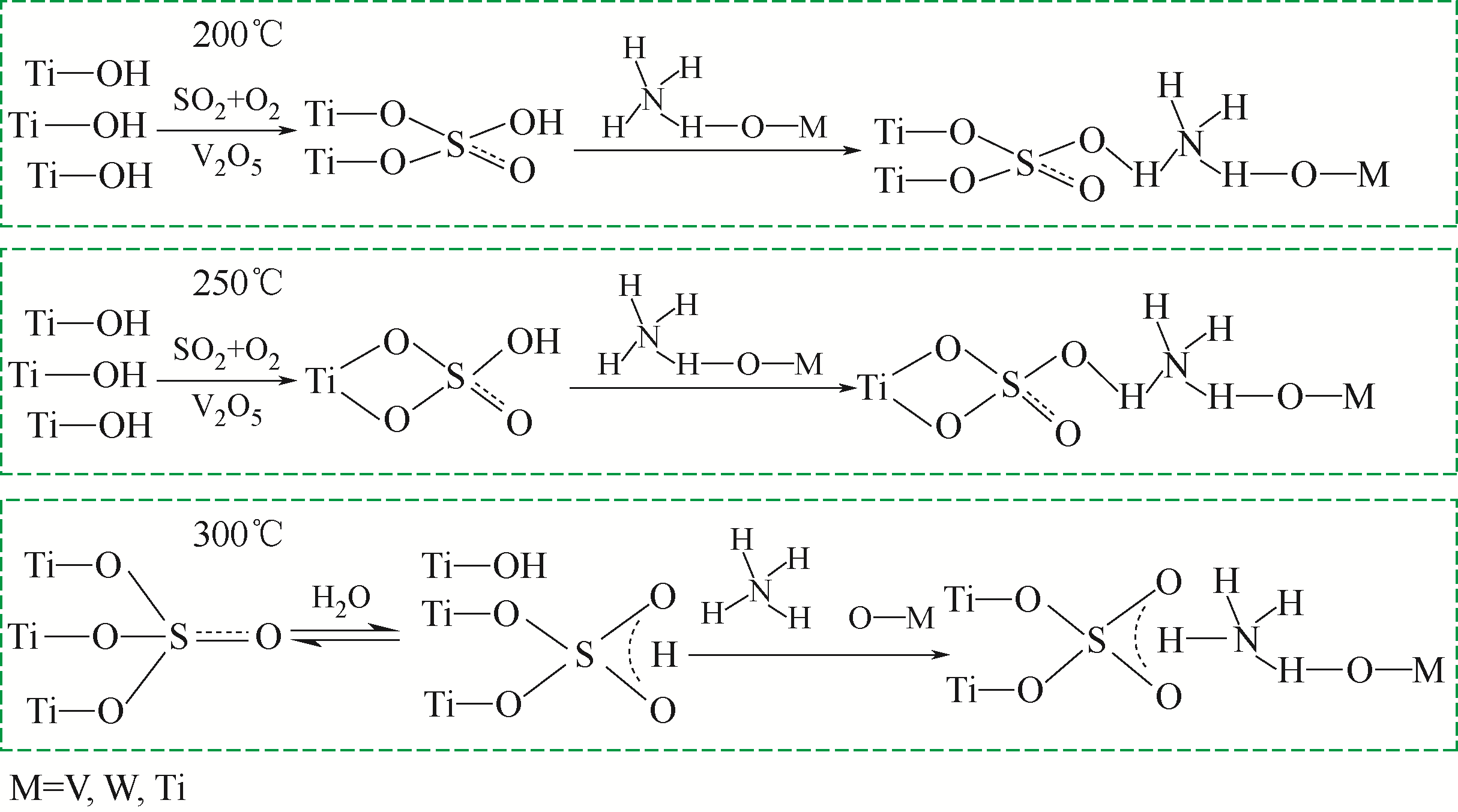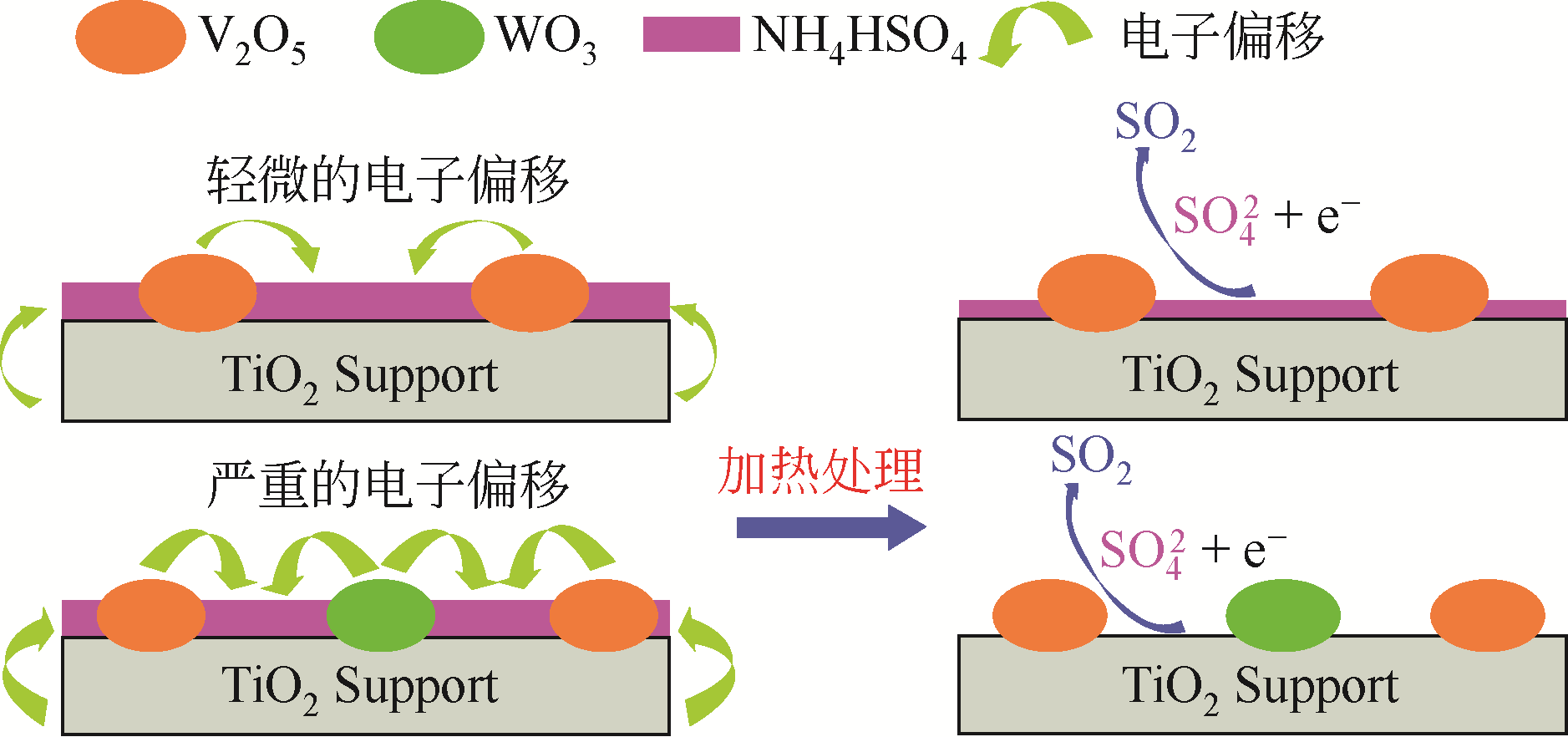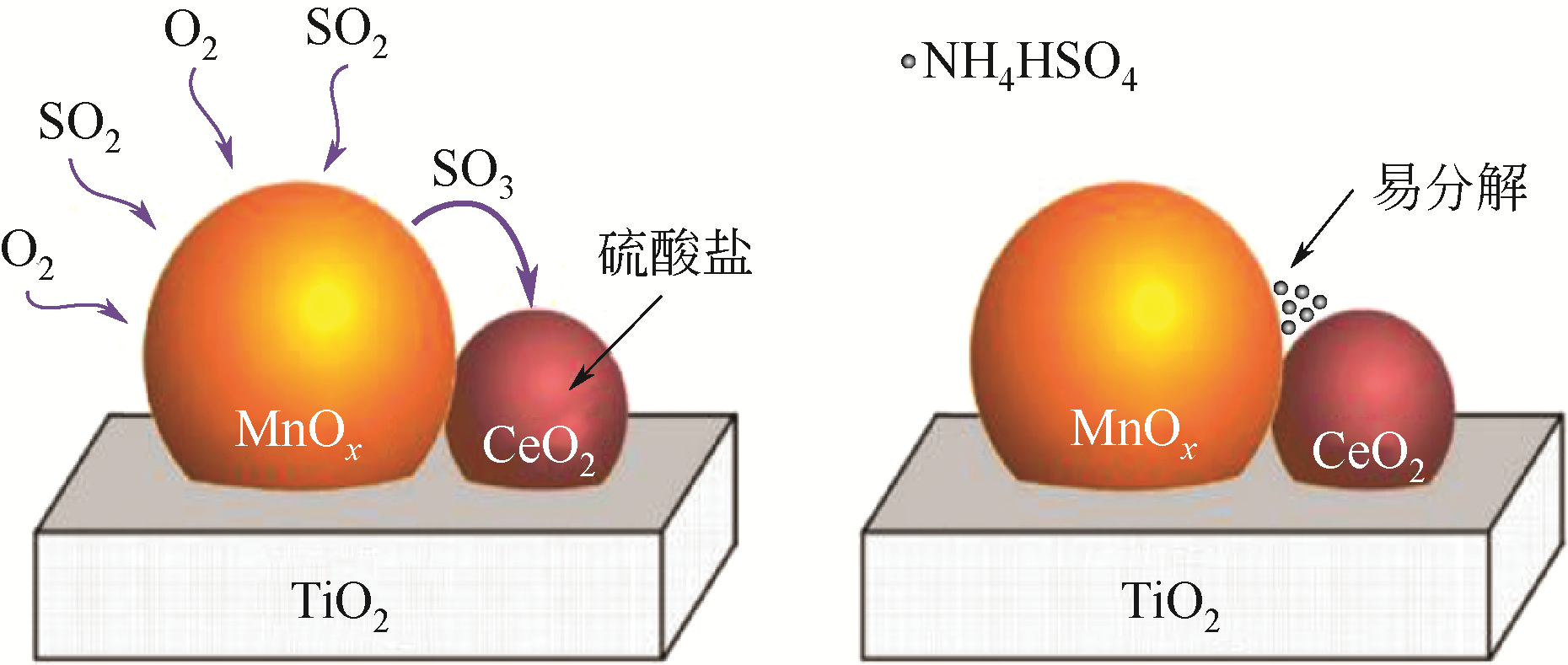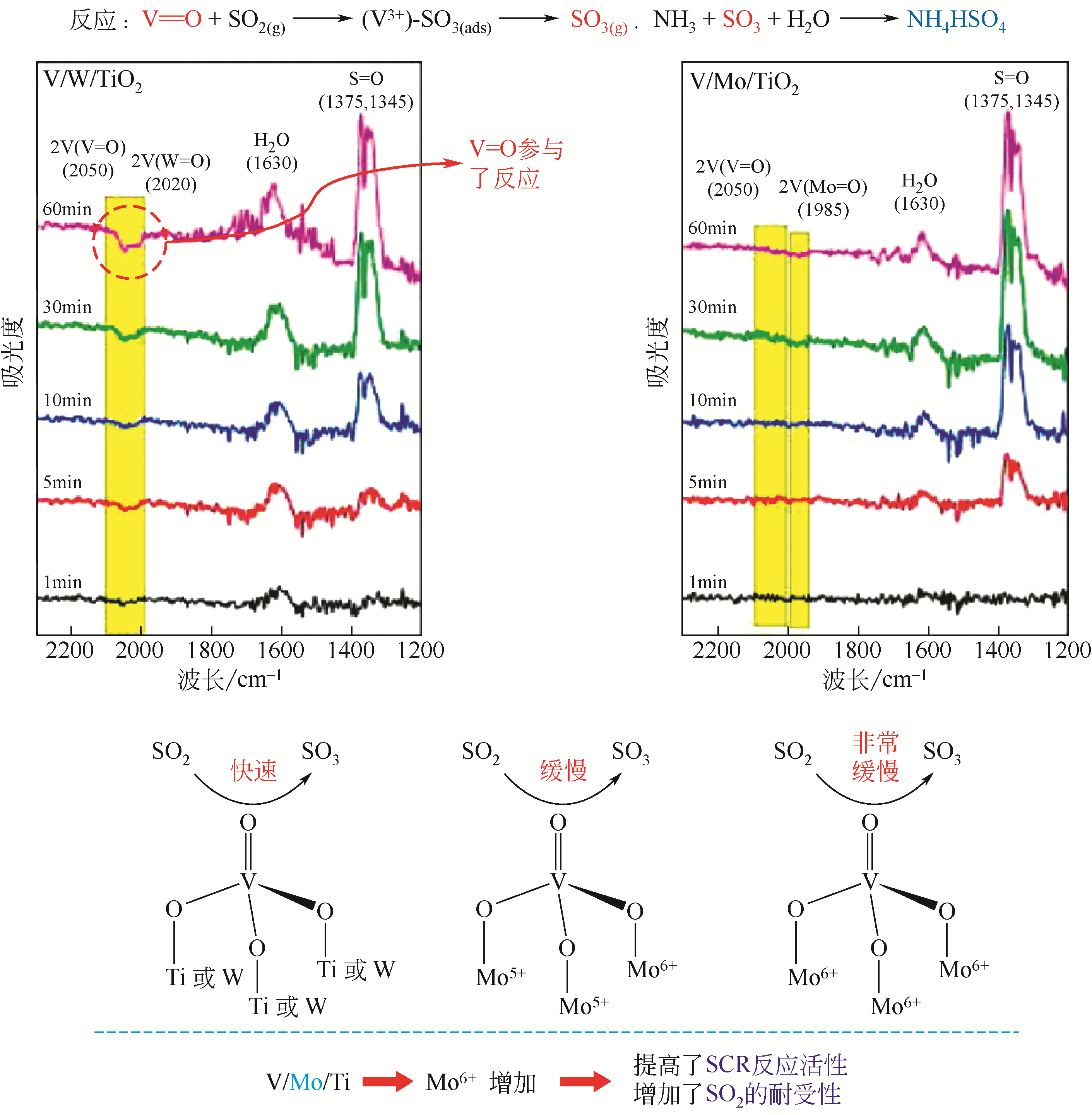Chemical Industry and Engineering Progress ›› 2021, Vol. 40 ›› Issue (4): 2328-2337.DOI: 10.16085/j.issn.1000-6613.2020-1049
• Resources and environmental engineering • Previous Articles Next Articles
Research progress on the characteristics and control methods of SO3 and NH4HSO4 formation in coal-fired flue gas
YIN Zijun1( ), SU Sheng1(
), SU Sheng1( ), WANG Zhonghui1, WANG Lele2, AN Xiaoxue1, ZHAO Zhigang1, CHEN Yifeng1, LIU Tao1, WANG Yi1, HU Song1, XIANG Jun1
), WANG Zhonghui1, WANG Lele2, AN Xiaoxue1, ZHAO Zhigang1, CHEN Yifeng1, LIU Tao1, WANG Yi1, HU Song1, XIANG Jun1
- 1.State Key Laboratory of Coal Combustion, Huazhong University of Science & Technology, Wuhan 430074, Hubei, China
2.Xi’an Thermal Power Research Institute Company Limited, Suzhou Branch, Suzhou 215153, Jiangsu, China
-
Received:2020-06-10Online:2021-04-14Published:2021-04-05 -
Contact:SU Sheng
燃煤烟气中SO3与NH4HSO4生成特性及其控制方法研究进展
尹子骏1( ), 苏胜1(
), 苏胜1( ), 王中辉1, 王乐乐2, 安晓雪1, 赵志刚1, 陈逸峰1, 刘涛1, 汪一1, 胡松1, 向军1
), 王中辉1, 王乐乐2, 安晓雪1, 赵志刚1, 陈逸峰1, 刘涛1, 汪一1, 胡松1, 向军1
- 1.华中科技大学煤燃烧国家重点实验室,湖北 武汉 430074
2.西安热工研究院有限公司苏州分公司,江苏 苏州 215153
-
通讯作者:苏胜 -
作者简介:尹子骏(1996—),男,硕士研究生,研究方向为SO3生成控制。E-mail:291300330@qq.com 。 -
基金资助:国家自然科学基金(51976072)
CLC Number:
Cite this article
YIN Zijun, SU Sheng, WANG Zhonghui, WANG Lele, AN Xiaoxue, ZHAO Zhigang, CHEN Yifeng, LIU Tao, WANG Yi, HU Song, XIANG Jun. Research progress on the characteristics and control methods of SO3 and NH4HSO4 formation in coal-fired flue gas[J]. Chemical Industry and Engineering Progress, 2021, 40(4): 2328-2337.
尹子骏, 苏胜, 王中辉, 王乐乐, 安晓雪, 赵志刚, 陈逸峰, 刘涛, 汪一, 胡松, 向军. 燃煤烟气中SO3与NH4HSO4生成特性及其控制方法研究进展[J]. 化工进展, 2021, 40(4): 2328-2337.
share this article
Add to citation manager EndNote|Ris|BibTeX
URL: https://hgjz.cip.com.cn/EN/10.16085/j.issn.1000-6613.2020-1049
| 机组编号 | 装机容量/MW | SO3质量浓度/mg·m-3 | |||||
|---|---|---|---|---|---|---|---|
| SCR入口 | SCR出口 | 空预器出口 | 电除尘器出口 | 脱硫装置出口 | 湿式电除尘器出口 | ||
| A | 600 | 19.82 | 30.61 | 28.54 | 24.73 | 18.00 | — |
| B | 600 | 33.14 | 67.45 | 62.62 | 50.61 | 30.65 | 8.22 |
| C | 600 | 16.61 | 32.52 | 30.21 | 22.69 | 16.68 | — |
| D | 660 | 34.55 | 74.23 | 70.22 | 53.41 | 40.88 | — |
| E | 660 | 29373 | 68.66 | 65.76 | 50.91 | 33.76 | — |
| 机组编号 | 装机容量/MW | SO3质量浓度/mg·m-3 | |||||
|---|---|---|---|---|---|---|---|
| SCR入口 | SCR出口 | 空预器出口 | 电除尘器出口 | 脱硫装置出口 | 湿式电除尘器出口 | ||
| A | 600 | 19.82 | 30.61 | 28.54 | 24.73 | 18.00 | — |
| B | 600 | 33.14 | 67.45 | 62.62 | 50.61 | 30.65 | 8.22 |
| C | 600 | 16.61 | 32.52 | 30.21 | 22.69 | 16.68 | — |
| D | 660 | 34.55 | 74.23 | 70.22 | 53.41 | 40.88 | — |
| E | 660 | 29373 | 68.66 | 65.76 | 50.91 | 33.76 | — |
| 吸附剂 | 锅炉内 | SCR | 空预器 | |||||
|---|---|---|---|---|---|---|---|---|
| 优点 | 缺点 | 优点 | 缺点 | 优点 | 缺点 | |||
| 石灰石 | 可同时脱除SO2和SO3 | 导致催化剂中毒,影响ESP除尘效率 | — | — | — | — | ||
| Ca(OH)2 | 可同时脱除SO2和SO3 | 易结焦 | 延缓空预器堵塞,对飞灰质量影响小 | SO3脱除效率低,影响ESP除尘效率 | SO3脱除效率高 | SO3脱除效率低,影响ESP除尘效率 | ||
| MgO | SO3脱除产物可通过吹灰设备去除 | 脱除效率低于Na基和Ca基吸附剂 | 对ESP除尘效率影响小,延缓空预器堵塞 | 脱除效率低于Na基和Ca基吸附剂 | — | — | ||
| Mg(OH)2 | 不结焦,对催化剂影响小 | 吸附剂用量大,成本高 | — | — | — | — | ||
天然碱 NaHCO3 | 可同时脱除SO2和SO3 | 易结焦,导致催化剂中毒 | 对ESP除尘效率影响小 | 需增加研磨设备,成本高 | 避免NaHSO4在空预器沉积 | 与上游相比脱除效率降低 | ||
SBS Na2CO3 | SCR宽负荷运行,脱出效率高 | 导致催化剂中毒 | 对ESP除尘效率影响小,SO3脱除效率高 | NaHSO4会在空预器和烟道沉积 | 避免NaHSO4在空预器沉积 | NaHSO4会烟道沉积,对飞灰质量影响大 | ||
| 吸附剂 | 锅炉内 | SCR | 空预器 | |||||
|---|---|---|---|---|---|---|---|---|
| 优点 | 缺点 | 优点 | 缺点 | 优点 | 缺点 | |||
| 石灰石 | 可同时脱除SO2和SO3 | 导致催化剂中毒,影响ESP除尘效率 | — | — | — | — | ||
| Ca(OH)2 | 可同时脱除SO2和SO3 | 易结焦 | 延缓空预器堵塞,对飞灰质量影响小 | SO3脱除效率低,影响ESP除尘效率 | SO3脱除效率高 | SO3脱除效率低,影响ESP除尘效率 | ||
| MgO | SO3脱除产物可通过吹灰设备去除 | 脱除效率低于Na基和Ca基吸附剂 | 对ESP除尘效率影响小,延缓空预器堵塞 | 脱除效率低于Na基和Ca基吸附剂 | — | — | ||
| Mg(OH)2 | 不结焦,对催化剂影响小 | 吸附剂用量大,成本高 | — | — | — | — | ||
天然碱 NaHCO3 | 可同时脱除SO2和SO3 | 易结焦,导致催化剂中毒 | 对ESP除尘效率影响小 | 需增加研磨设备,成本高 | 避免NaHSO4在空预器沉积 | 与上游相比脱除效率降低 | ||
SBS Na2CO3 | SCR宽负荷运行,脱出效率高 | 导致催化剂中毒 | 对ESP除尘效率影响小,SO3脱除效率高 | NaHSO4会在空预器和烟道沉积 | 避免NaHSO4在空预器沉积 | NaHSO4会烟道沉积,对飞灰质量影响大 | ||
| 1 | 李高磊, 郭沂权, 张世博, 等. 超低排放燃煤电厂SO3生成及控制的试验研究[J]. 中国电机工程学报, 2019, 39(4): 1079-1086. |
| LI G L, GUO Y Q, ZHANG S B, et al. Experimental research on SO3 generation and control in ultra-low emission coal-fired power plant[J]. Proceedings of the CSEE, 2019, 39(4): 1079-1086. | |
| 2 | 束航, 张玉华, 范红梅, 等. SCR脱硝中催化剂表面NH4HSO4生成及分解的原位红外研究[J]. 化工学报, 2015, 66(11): 4460-4468. |
| SHU H, ZHANG Y H, FAN H M, et al. FT-IR study of formation and decomposition of ammonium bisulfates on surface of SCR catalyst for nitrogen removal[J]. CIESC Journal, 2015, 66(11): 4460-4468. | |
| 3 | 唐昊, 李慧, 杨江毅, 等. NH3-SCR工艺中硫酸铵盐的生成与分解机理研究进展[J]. 化工进展, 2018, 37(3): 822-831. |
| TANG H, LI H, YANG J Y, et al. Research progress on the formation and decomposition mechanism of ammonium-sulfate salts in NH3-SCR technology[J]. Chemical Industry and Engineering Progress, 2018, 37(3): 822-831. | |
| 4 | 景有志, 杨丽, 朱淑维, 等. 锰钛系低温选择性催化还原催化剂的抗SO2和抗H2O性能研究进展[J]. 化工进展, 2018, 37(1): 105-111. |
| JING Y Z, YANG L, ZHU S W, et al. Research progress on the SO2 and H2O resistance of Mn-Ti catalysts for low-temperature SCR[J]. Chemical Industry and Engineering Progress, 2018, 37(1): 105-111. | |
| 5 | HUANG R, ZHANG Y, BOZZETTI C, et al. High secondary aerosol contribution to particulate pollution during haze events in China[J]. Nature, 2014, 514: 218-222. |
| 6 | CHENG Y, ZHENG G, WEI C, et al. Reactive nitrogen chemistry in aerosol water as a source of sulfate during haze events in China[J]. Science Advances, 2016, 2(12): e1601530. |
| 7 | 蒋海涛, 蔡兴飞, 付玉玲, 等. 燃煤电厂SO3形成、危害及控制技术[J]. 发电设备, 2013, 27(5): 366-368. |
| JIANG H T, CAI X F, FU Y L, et al. Formation, harms and control technology of SO3 in coal-fired power plants[J]. Power Equipment, 2013, 27(5): 366-368. | |
| 8 | QING M, SU S, WANG L, et al. Effects of H2O and CO2 on the catalytic oxidation property of V/W/Ti catalysts for SO3 generation[J]. Fuel, 2019, 237(1): 545-554. |
| 9 | LI X, WU Z, ZHANG L, et al. An updated acid dew point temperature estimation method for air-firing and oxy-fuel combustion processes[J]. Fuel Processing Technology, 2016, 154: 204-209. |
| 10 | HINDIYARTI L, GLARBORG P, MARSHALL P. Reactions of SO3 with the O/H radical pool under combustion conditions[J]. The Journal of Physical Chemistry A, 2007, 111(19): 3984-3991. |
| 11 | FLEIG D, ANDERSSON K, NORMANN F, et al. SO3 Formation under oxyfuel combustion conditions[J]. Industrial & Engineering Chemistry Research, 2011, 50(14): 8505-8514. |
| 12 | SARBASSOV Y, DUAN L, MANOVIC V, ANTHONY E J. Sulfur trioxide formation/emissions in coal-fired air-and oxy-fuel combustion processes: a review[J]. Greenhouse Gases-Sci Technol., 2018, 8(3): 402-428. |
| 13 | SCHLESINGER R B, ZELIKOFF J T, CHEN L C, et al. Assessment of toxicologic interactions resulting from acute inhalation exposure to sulfuric acid and ozone mixtures[J]. Toxicology and Applied Pharmacology, 1992, 115(2): 183-190. |
| 14 | SARBASSOV Y, DUAN L, JEREMIAS M, et al. SO3 formation and the effect of fly ash in a bubbling fluidised bed under oxy-fuel combustion conditions[J]. Fuel Processing Technology, 2017, 167: 314-321. |
| 15 | GALLOWAY B, PADAK B. Effect of flue gas components on the adsorption of sulfur oxides on CaO[J]. Fuel, 2017, 197: 541-550. |
| 16 | 唐昊, 李文艳, 王琦, 等. 商用选择性催化还原催化剂SO2氧化率控制研究进展[J]. 化工进展, 2017, 36(6): 2143-2149. |
| TANG H, LI W Y, WANG Q, et al. Research progress on the control of SO2 oxidation by commercial SCR catalyst[J]. Chemical Industry and Engineering Progress, 2017, 36(6): 2143-2149. | |
| 17 | QING M, SU S, WANG L, et al. Getting insight into the oxidation of SO2 to SO3 over V2O5-WO3/TiO2 catalysts: reaction mechanism and effects of NO and NH3[J]. Chemical Engineering Journal, 2019, 361: 1215-1224. |
| 18 | KAMATA H, OHARA H, TAKAHASHI K, et al. SO2 oxidation over the V2O5/TiO2 SCR catalyst[J]. Catalysis Letters, 2001, 73(1): 79-83. |
| 19 | JI P, GAO X, DU X, et al. Relationship between the molecular structure of V2O5/TiO2 catalysts and the reactivity of SO2 oxidation[J]. Catalysis Science & Technology, 2016, 6:1187-1194. |
| 20 | DUNN J P, KOPPULA P R, STENGER H G, et al. Oxidation of sulfur dioxide to sulfur trioxide over supported vanadia catalysts[J]. Applied Catalysis B: Environmental, 1998, 19(2): 103-117. |
| 21 | XIONG J, LI Y, LIN Y, et al. Formation of sulfur trioxide during the SCR of NO with NH3 over a V2O5/TiO2 catalyst[J]. RSC Adv., 2019, 9: 38952-38961. |
| 22 | ZHENG C, WANG Y, LIU Y, et al. Formation, transformation, measurement, and control of SO3 in coal-fired power plants[J]. Fuel, 2019, 241: 327-346. |
| 23 | 杨用龙, 苏秋凤, 张杨, 等. 燃煤电站典型超低排放工艺的SO3脱除性能及排放特性[J]. 中国电机工程学报, 2019, 39(10): 2962-2969. |
| YANG Y L, SU Q F, ZHANG Y, et al. Removal performance and emission characteristics of SO3 by typical ultra-low emission technologies in coal-fired power plants[J]. Proceedings of the CSEE, 2019, 39(10): 2962-2969. | |
| 24 | RHUDY R. Sulfuric acid removal process evaluation: short-term results[R]. California: Electric Power Research Institute, 2001. |
| 25 | 卿梦霞. 燃煤烟气SO3与硫酸氢铵生成机理研究[D]. 武汉: 华中科技大学, 2019. |
| QING M X. Study on generation mechanism of SO3 and ammounium hydrogen sulfate in coal-fired flue gas[D]. Wuhan: Huazhong University of Science and Technology, 2019. | |
| 26 | XI Y, OTTINGER N A, LIU Z G. New insights into sulfur poisoning on a vanadia SCR catalyst under simulated diesel engine operating conditions[J]. Applied Catalysis B: Environmental, 2014, 160/161: 1-9. |
| 27 | SHI Y, SHU H, ZHANG Y, et al. Formation and decomposition of NH4HSO4 during selective catalytic reduction of NO with NH3 over V2O5-WO3/TiO2 catalysts[J]. Fuel Processing Technology, 2016, 150: 141-147. |
| 28 | LI C X, SHEN M Q, YU T, et al. The mechanism of ammonium bisulfate formation and decomposition over V/WTi catalysts for NH3-selective catalytic reduction at various temperatures[J]. Physical Chemistry Chemical Physics, 2017, 19(23): 15194-15206. |
| 29 | WANG X, DU X, LIU S, et al. Understanding the deposition and reaction mechanism of ammonium bisulfate on a vanadia SCR catalyst: a combined DFT and experimental study[J]. Applied Catalysis B: Environmental, 2019, 260: 118168. |
| 30 | CHEN P, WANG Z, CHANG J, et al. Experimental study of the reactivity of Ca-based matters with SO3[C]//2011 Asia-Pacific Power and Energy Engineering Conference, IEEE, 2011. |
| 31 | 陈晓露, 赵钦新, 鲍颖群, 等. SO3脱除技术实验研究[J]. 动力工程学报, 2014, 34(12): 966-971. |
| CHEN X L, ZHAO Q X, BAO Y Q, et al. Experimental research on SO3 removal[J]. Journal of Chinese Society of Power Engineering, 2014, 34(12): 966-971. | |
| 32 | WILHELM J H. SBS injection fights off SO3[J]. Power Eng. Int., 2014, 12(12): 28-30. |
| 33 | MORETTI A L, TRISCORI R J, RITZENTHALER D P. A system approach to SO3 mitigation[C]//Combined Power Plant Air Pollutant Control Mega Symposium, Baltimore, Maryland. USA, 2006. |
| 34 | 高智溥, 胡冬, 张志刚, 等. 碱性吸附剂脱除 SO3 技术在大型燃煤机组中的应用[J]. 中国电力, 2017, 50(7): 102-108. |
| GAO Z B, HU D, ZHANG Z G, et al. Application of alkaline adsorbent removal SO3 technology in large coal-fired units[J]. Electric Power, 2017, 50(7): 102-108. | |
| 35 | BLYTHE G, DOMBROWSKI K. SO3 mitigation guide update[R]. Palo Alto, California, USA: Electric Power Research Institute, 2004: 31-43. |
| 36 | LIU Z, WOO S I. Recent advances in catalytic DeNOx science and technology[J]. Catal. Rev.: Sci. Eng., 2006, 48(1): 43. |
| 37 | BALTIN G, KÖSER H, WENDLANDT K. Reactive desorption of sulfuric acid from ammonium sulfate loaded V2O5-WO3/TiO2 DeNOx‐catalysts[J]. Chemie Ingenieur Technik, 2001, 73(6): 605. |
| 38 | YE D, QU R, SONG H, et al. Investigation of the promotion effect of WO3 on the decomposition and reactivity of NH4HSO4 with NO on V2O5-WO3/TiO2 SCR catalysts[J]. RSC Advances, 2016, 6: 55584-55592. |
| 39 | QIAO J, WANG N, WANG Z, et al. Porous bimetallic Mn2Co1Ox catalysts prepared by a one-step combustion method for the low temperature selective catalytic reduction of NOx with NH3[J]. Catal. Commun., 2015, 72: 111-115. |
| 40 | WANG F, SHEN B, ZHU S, et al. Promotion of Fe and Co doped Mn-Ce/TiO2 catalysts for low temperature NH3-SCR with SO2 tolerance[J]. Fuel, 2019, 249(1): 54-60. |
| 41 | LIU Z, YI Y, ZHANG S, et al. Selective catalytic reduction of NOx with NH3 over Mn-Ce mixed oxide catalyst at low temperatures[J]. Catalysis Today, 2013, 216: 76-81. |
| 42 | JIN R, LIU Y, WANG Y, et al. The role of cerium in the improved SO2 tolerance for NO reduction with NH3 over Mn-Ce/TiO2 catalyst at low temperature[J]. Applied Catalysis B: Environmental, 2014, 148/149: 582-588. |
| 43 | KWON D W, PARK K H, HONG S C. Enhancement of SCR activity and SO2 resistance on VOx/TiO2 catalyst by addition of molybdenum[J]. Chemical Engineering Journal, 2016, 284: 315-324. |
| 44 | XU Y, WU X, LIN Q, et al. SO2 promoted V2O5-MoO3/TiO2 catalyst for NH3-SCR of NO, at low temperatures[J]. Applied Catalysis A: General, 2019, 570: 42-50. |
| [1] | LAI Shini, JIANG Lixia, LI Jun, HUANG Hongyu, KOBAYASHI Noriyuki. Research progress of ammonia blended fossil fuel [J]. Chemical Industry and Engineering Progress, 2023, 42(9): 4603-4615. |
| [2] | ZHANG Xuewei, HUANG Yaji, XU Yueyang, CHENG Haoqiang, ZHU Zhicheng, LI Jinlei, DING Xueyu, WANG Sheng, ZHANG Rongchu. Adsorption characteristics of SO3 from coal flue gas by alkaline adsorbent [J]. Chemical Industry and Engineering Progress, 2023, 42(7): 3855-3864. |
| [3] | LI Jia, FAN Xing, CHEN Li, LI Jian. Research progress of simultaneous removal of NO x and N2O from the tail gas of nitric acid production [J]. Chemical Industry and Engineering Progress, 2023, 42(7): 3770-3779. |
| [4] | YANG Xigang, CHEN Guoqing, HUANG Linbin, GU Shijun, LI Changsong, ZHANG Yong, JIN Baosheng. Industrial experiment on the effect of SNCR using urea as the reducing agent on the operation of large capacity power station pulverized coal boiler [J]. Chemical Industry and Engineering Progress, 2022, 41(7): 3573-3581. |
| [5] | LONG Hongming, DING Long, QIAN Lixin, CHUN Tiejun, ZHANG Hongliang, YU Zhengwei. Current situation and development trend of NO x and dioxins emission reduction in sintering flue gas [J]. Chemical Industry and Engineering Progress, 2022, 41(7): 3865-3876. |
| [6] | HAN Delin, LI Dan, WANG Tiantian, ZHANG Hai, ZHANG Yang, WANG Suilin. Emission characteristics of swirl premixed combustion stabilized using a displacing bluff body [J]. Chemical Industry and Engineering Progress, 2022, 41(6): 2915-2923. |
| [7] | WANG Xinyu, HUANG Yaji, XU Ligang, LI Zhiyuan, LI Si, LIU Xiaodong. Numerical simulation on regulating secondary air in same layer to alleviate high temperature corrosion of dual tangential boiler [J]. Chemical Industry and Engineering Progress, 2022, 41(5): 2292-2300. |
| [8] | TAN Xiao, QI Suitao, ZHOU Yiming, SHI Libin, CHENG Guangxu, YI Chunhai, YANG Bolun. Direct catalytic reduction of NO by bimetallic ferromanganese catalyst under non-thermal plasma [J]. Chemical Industry and Engineering Progress, 2022, 41(11): 5850-5857. |
| [9] | YANG Jingrui, WANG Ying, CHEN Hu, LYU Yongkang. Effects of O2 concentration on adjusting NO x oxidation ratio cooperated with CABR system denitration performance and microbial community structure [J]. Chemical Industry and Engineering Progress, 2022, 41(11): 6139-6148. |
| [10] | Yuehua LIU, Ju SHANGGUAN, Shoujun LIU, Song YANG, Wenguang DU. Nitrogen migration regarding the addition of iron-Ni composite additives during coal pyrolysis [J]. Chemical Industry and Engineering Progress, 2021, 40(1): 164-172. |
| [11] | Jing GUAN, Xilong LAN, Hong SUN, Zhigang LIU, Tong QIAO. Influence of different doped metal cations on the activity and SO2 resistance of Mn based catalysts for NH3-SCR reaction [J]. Chemical Industry and Engineering Progress, 2020, 39(6): 2440-2446. |
| [12] | Jiancheng YANG,Qin ZHANG,Boxiong SHEN,Shilei YUAN,Shining WANG. Review on denitrification mechanism of modified pillared clays [J]. Chemical Industry and Engineering Progress, 2020, 39(4): 1493-1499. |
| [13] | Peng FENG, Zhenghong LI, Hexin LIU, Houzhang TAN, Sicong ZHANG, Xuchao LU, Fuxin YANG. Migration and removal characteristics of SO3 in ultra-low emission coal-fired power plant [J]. Chemical Industry and Engineering Progress, 2020, 39(11): 4660-4667. |
| [14] | Sai CHEN, Mingsheng JIA, Minggao GUO, Gaozhen LIU. Application of SNCR to reduction of NOx in an industrial scale slag-tap pulverized coal boiler [J]. Chemical Industry and Engineering Progress, 2020, 39(10): 4290-4296. |
| [15] | Chunlin ZHAO, Ziran MA, Baodong WANG, Ge LI, Hongyan WANG, Jiali ZHOU, Guangjie LU, Yuting XIAO, Jianhui YANG, Jinfeng LU. Research progress of catalyst coating process for exhaust gas treatment from fixed source [J]. Chemical Industry and Engineering Progress, 2020, 39(10): 4015-4023. |
| Viewed | ||||||
|
Full text |
|
|||||
|
Abstract |
|
|||||
